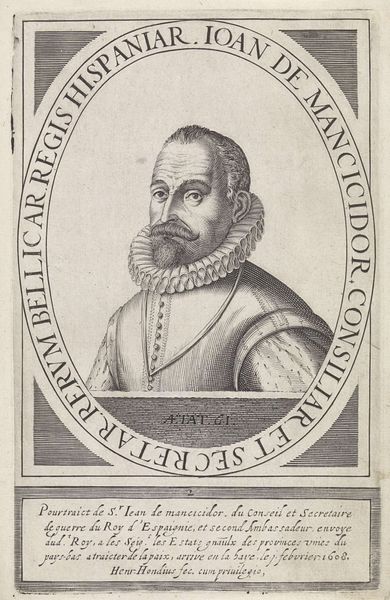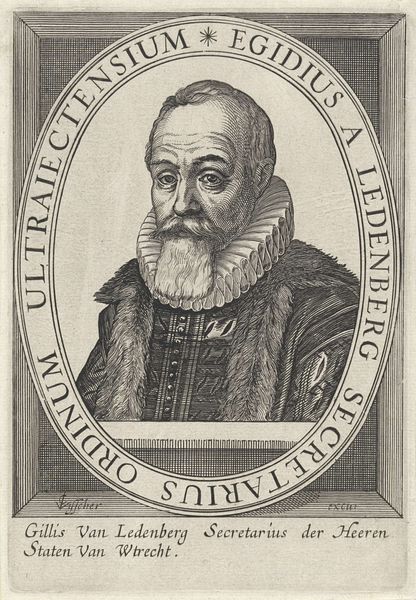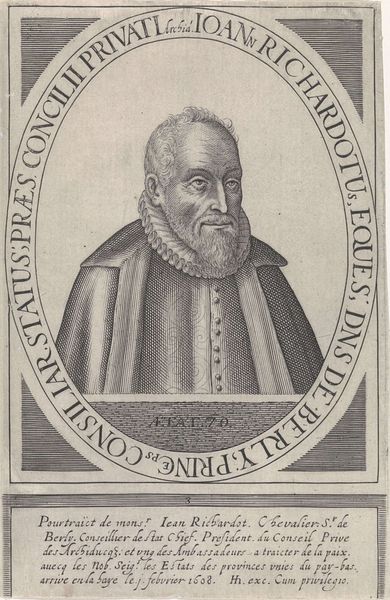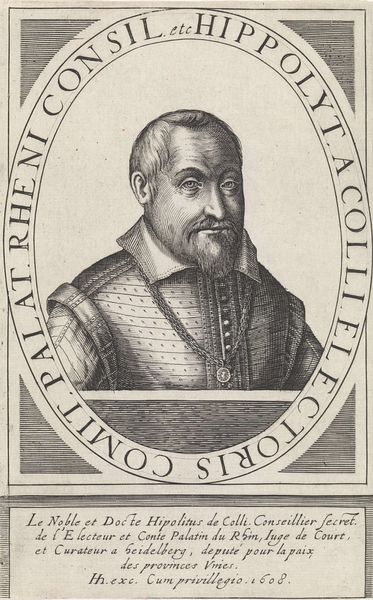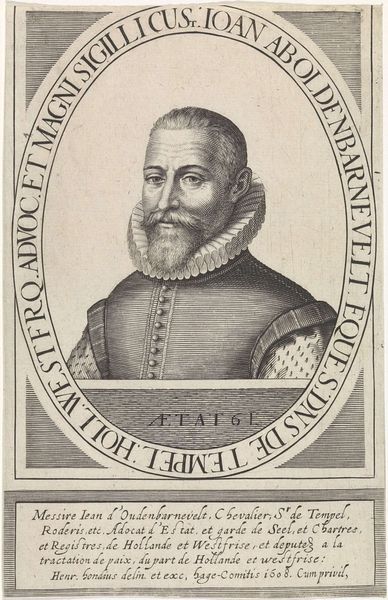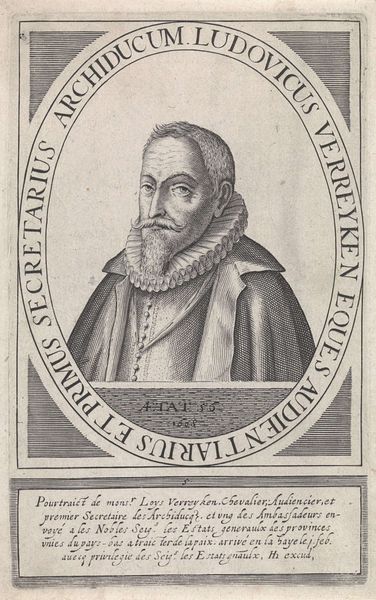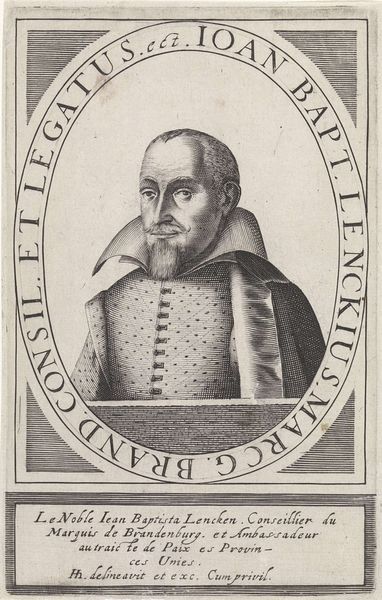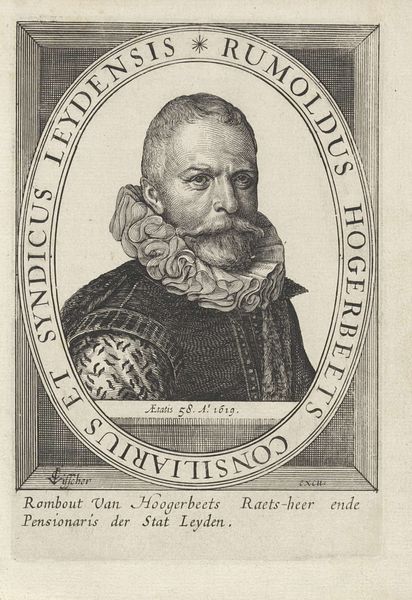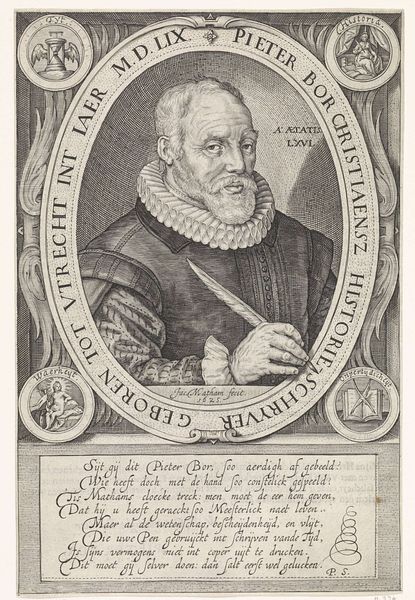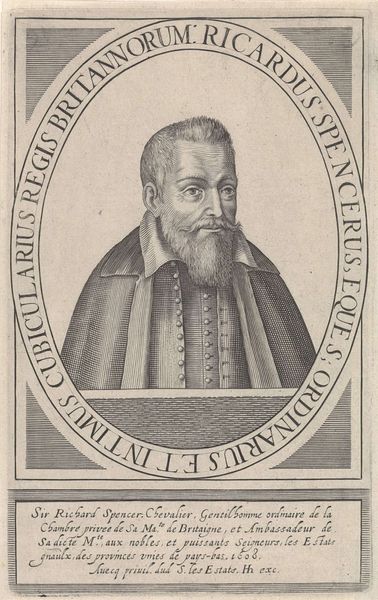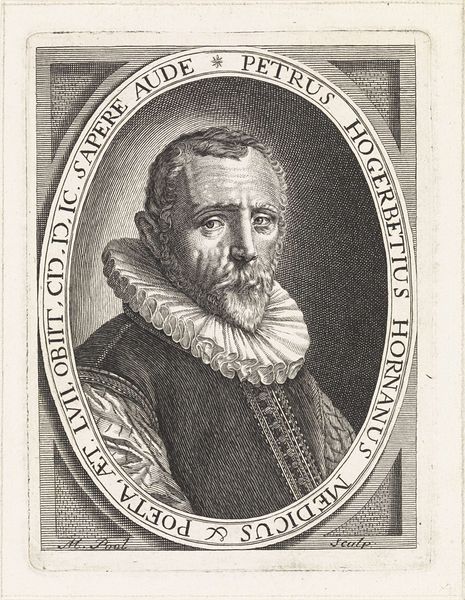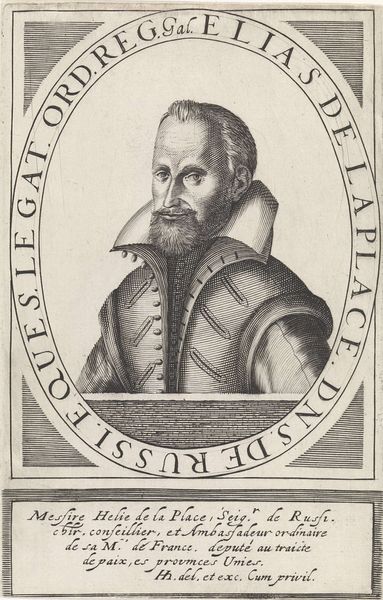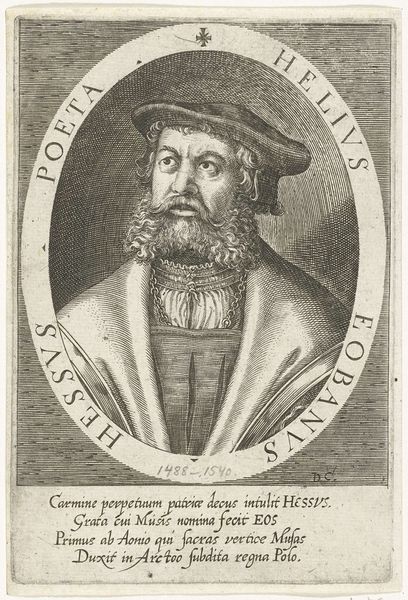
print, engraving
#
portrait
#
aged paper
#
baroque
#
dutch-golden-age
# print
#
old engraving style
#
figuration
#
portrait reference
#
line
#
engraving
#
columned text
Dimensions: height 194 mm, width 123 mm
Copyright: Rijks Museum: Open Domain
Curator: This is a portrait of Niklaas van Berk, dating back to 1608. It's an engraving by Hendrick Hondius I, currently held at the Rijksmuseum. Editor: It strikes me as severe. The man’s face is finely rendered, but that tightly buttoned doublet and stiff ruff make him appear quite rigid. Curator: Indeed. The very medium, engraving, lends itself to that impression. Hondius, a master printmaker, uses very fine lines, mimicking the popular formal style in portraits of the Dutch Golden Age, which was rising to prominence as van Berk held positions of power. The inscription notes his role as councilor of Utrecht, as well as deputy during peace negotiations, implying his high standing and connection to international diplomacy during a crucial era. Editor: That’s what I mean; I am sensing it too. This reminds me of portraiture in ancient Rome, though in the Dutch Republic, we get a similar visual language establishing status. I notice, too, that the columns of text flanking his image echo a classicism appropriate to civic virtue. Curator: I agree. Portraits like this had an important function in solidifying the image of the Republic’s elite, demonstrating integrity and contributing to civic identity through these classical and pious symbols. Note how Latin is preferred in the phrase containing his name, title and origin. Van Berk is being styled, carefully constructed. Editor: Definitely. Everything about it speaks to established, deeply rooted authority and intellectual virtue. Curator: We see this format becoming extremely common among civic leaders, preachers, and scholars. Its circulation would have been pretty broad, accessible to a burgeoning literate public invested in recognizing their leadership. Editor: Almost like an early form of propaganda, ensuring everyone knew who held the reins. He’s someone to be taken seriously. It certainly comes across even now. Curator: Precisely. And knowing that the Netherlands was still fighting for its independence from Spain then gives this portrait of stability additional symbolic weight. Editor: It brings so many complex things to light when one considers the details of such a traditional art. It appears we can uncover social meaning from this symbolic portrayal in a number of ways, after all.
Comments
No comments
Be the first to comment and join the conversation on the ultimate creative platform.
